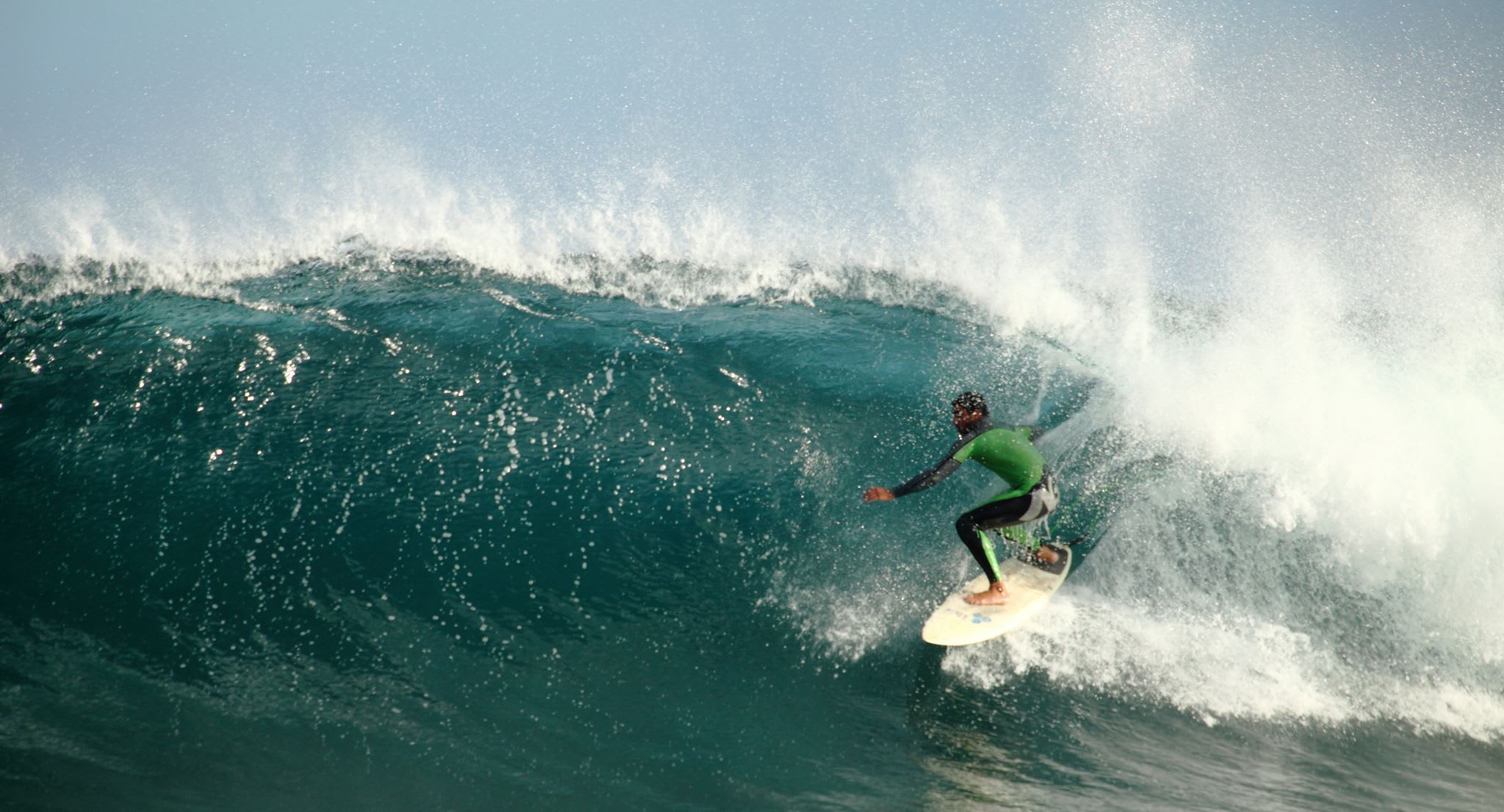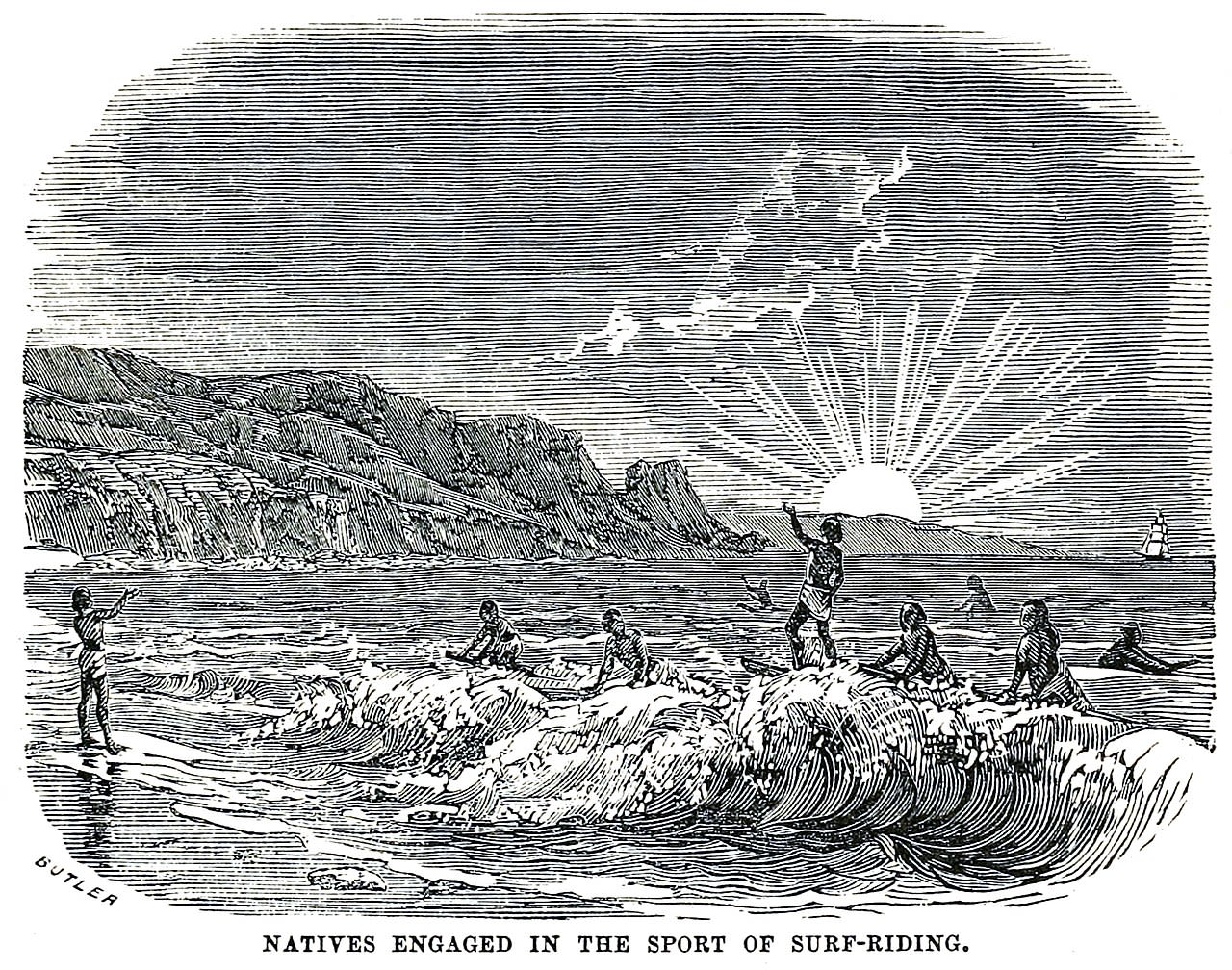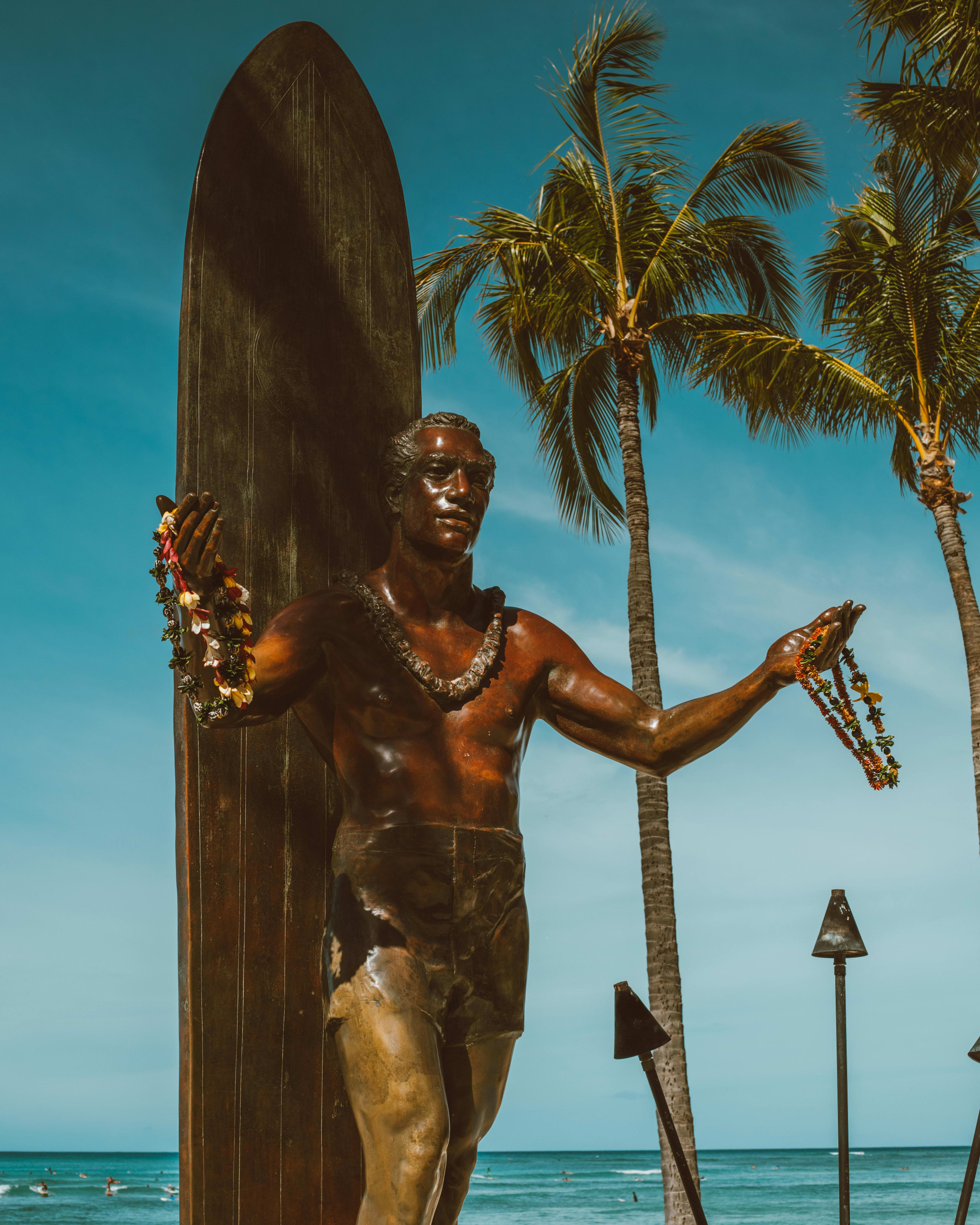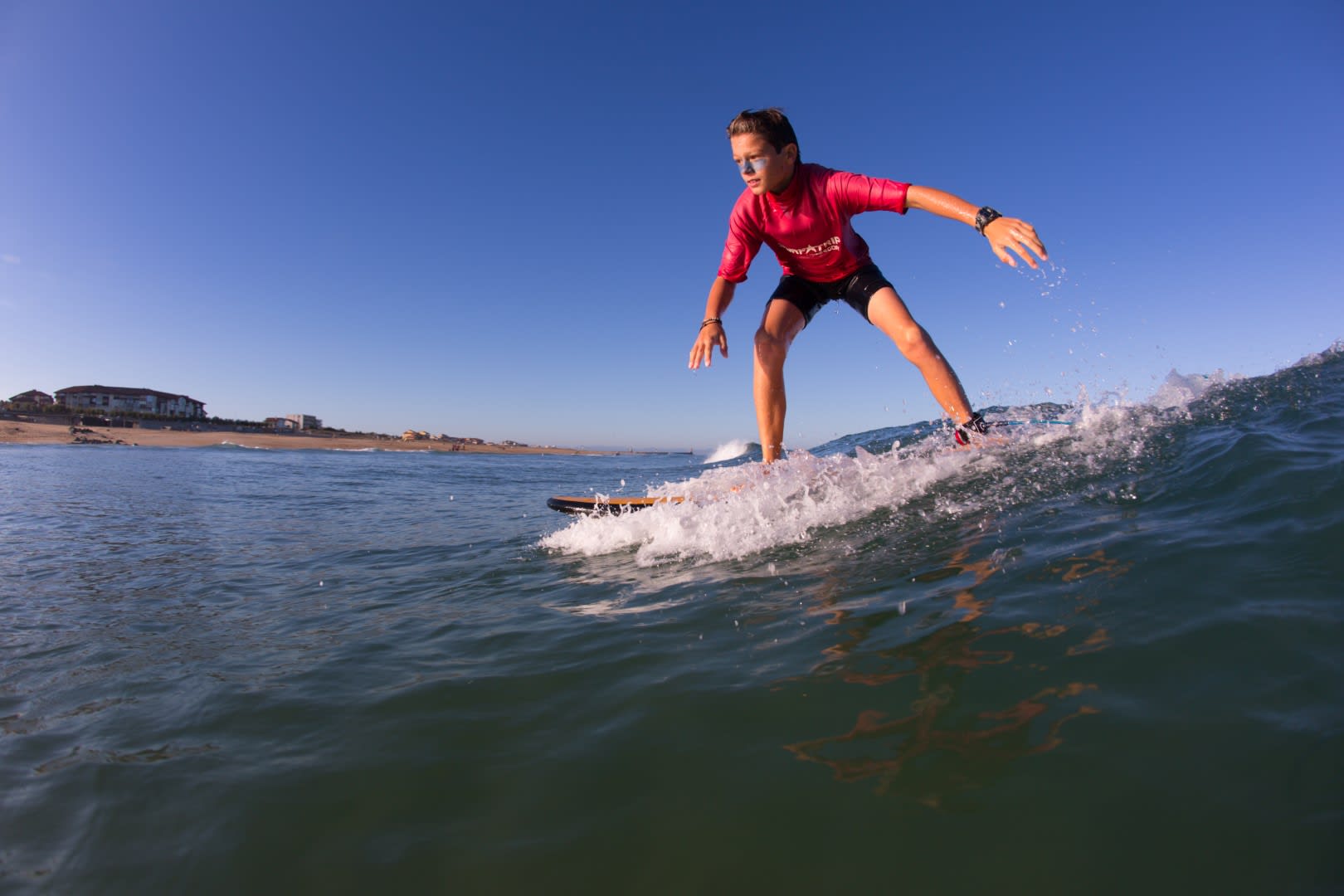Surfing and its origins

Discover the evolution of surfing over time... What are the origins and history of surfing? Where does this age-old sport come from? Who were its pioneers? We've traced the history in the company of explorers and the first surfers...
Surfing, an ancient art and a contemporary passion, transcends geographical and cultural boundaries to become an emblematic way of life that unites all surfing enthusiasts. Surfing is an ancient sport that has evolved over time. For thousands of years, surfing has left its mark on the cultures of coastal peoples the world over.
The origins of surfing can be traced back to the Oceanic peoples, who saw the waves not only as a challenge to be conquered but also as a source of spiritual inspiration. From the Polynesian islands to the shores of Hawaii, surfing was more than just a pastime, it was a way of life that connected people to the ocean.
Discover surfing in Polynesia
Although neither the date of birth nor the origins of surfing are precise, it is presumed that the sport originated in the Pacific, between Tahiti and Hawaii. Travel accounts depict natives lying on large pieces of wood to 'catch' waves. At the end of the 18th century, Fray José de Acosta, a Spanish anthropologist, published a work entitled "Natural and Moral History of the Indians", in which he depicted the daily life of the indigenous civilisations in Peru, who used wooden planks of some kind to navigate the ocean. The "caballitos de Totora" were made from reed stems and leaves, and had been used mainly for fishing for thousands of years!

British explorer James Cook is famous for having travelled in the Pacific in the 18th century, and he had his first encounter with the sport in 1778 on the Hawaiian Islands. It was his lieutenant, James King, who described in a logbook the practice of surfing as he had observed it at Kealakekua Bay, on the Big Island of Hawaii. Originally, surfing was a rite of passage for tribal chiefs, who proved their worth by battling the elements on a board made of wood or tree bark weighing around 50 kilos. At that time, in Polynesia, surfing was a way of advancing socially and gaining recognition in the community.
Here is an extract from James Cook's logbook, after his visit to Polynesia in 1769, during his first round-the-world voyage (1768-1771):
"We saw ten or twelve Indians swimming for their own pleasure; when the waves broke close to them, they dived underneath and reappeared on the other side with inconceivable skill and ease. What made this spectacle even more amusing was that the swimmers grabbed the stern of an old dugout canoe and pushed it ahead of them, swimming out to quite a distance out to sea; Then two or three of these Indians got on it, and turning the square end against the wave, they were driven towards the coast with incredible speed, and sometimes even as far as the shore; usually the wave broke over them before they were halfway, so they dived and got up again on the other side, still holding on to the rest of the canoe. "
Colonisation and its impact on surfing
With American colonisation, the ancestral practice and rituals of surfing were gradually lost, notably because of the English missionaries who landed in the 18th century, believing that these practices were anti-moral, a threat to modesty and rigour! The colonists also sought to discourage and ban surfing because of the traditional religious and cultural connotations of the indigenous peoples!
Modern surfing in the 20th century

In the 1900s, Alexander Hume Ford (1868-1945) and Jack London began promoting surfing as an entertainment and tourist attraction in Hawaii. There is a concentration of surfers around the Outrigger Canoe Club, a yacht club reserved for white people. The Hui Nalu Club was founded by Hawaiians George Freeth and Duke Kahanamoku in 1908 to bring surfers together on Waikiki Beach and to preserve the Hawaiian influence on surfing.
Nothing happened for hundreds of years until the 1960s, when a passing American left a few boards as a gift... A priceless gift. In the same years, Australian surfers, looking for spots, were accompanied by Tahitians who showed them the places where lefts and rights rolled off the reef or onto the beach breaks. When they left, they left their boards with their Polynesian guides.
Olympic swimming champion Duke Kahanamoku also decided to breathe new life into this iconic sport by taking it across the oceans! He has put on numerous surfing demonstrations, notably in California and Australia, which have now become essential surfing destinations.
The passion and beauty of surfing have inspired the whole world, and in particular Jack London, the adventure writer who did so much to democratise the sport for the general public...
Duke Kahanamoku, a surfing legend

Duke Kahanamoku, born on 24 August 1890 in Honolulu, Hawaii, and died on 22 January 1968, was much more than just a surfer. He was a living legend, a versatile athlete, an actor, a Hawaiian cultural ambassador and a global symbol of the origins of surfing. Duke Kahanamoku is often considered the father of modern surfing, as he popularised the sport worldwide thanks to his exceptional skills and natural charisma.
In 1912, at the Stockholm Olympic Games, he won the gold medal for swimming the 100-metre freestyle, setting a new world record. This victory catapulted Kahanamoku onto the international scene and helped spread the sport of surfing beyond the shores of Hawaii.
Beyond his sporting achievements, Duke Kahanamoku was a true ambassador for Hawaiian culture. He travelled the world sharing his surfing skills, music, dance and culture. His warm personality and charm captivated crowds wherever he went, helping to promote a positive image of Hawaii and its indigenous people.
In addition to his talent for surfing and swimming, Duke Kahanamoku also had a successful career in film, appearing in several Hollywood movies in the 1920s and 1930s. His influence in entertainment helped further popularise surfing and Hawaiian culture in American popular culture. His influence in entertainment helped to further popularise surfing and Hawaiian culture in American popular culture, and even decades after his death he remains an iconic figure in surfing and Hawaiian culture. His legacy lives on through the generations of surfers he inspired and continues to inspire, as well as through annual events like Duke's Ocean Fest in Waikiki, which perpetuate his memory and contribution to surfing history.
The golden age of surfing
When the first World Surfing Championships were organised in Australia, some teams travelled by sailboat to Tahiti. A kind exchange: as soon as they arrived, the foreign surfers asked for advice from the locals with the best knowledge of the wave areas. In exchange, they accompanied them to the spots and discovered their first pleasures: as there were still no leashes attached to the ankles of wave hunters, as soon as a surfer fell and the board came back to shore, the young Tahitians rushed to bring it back out to sea. When the visitors left, they too abandoned a few boards.
With the democratisation of surfing around the world came technological advances that led to the development of surfboards that were lighter and more streamlined for a better gliding sensation. Fins made their appearance on boards, and new materials such as polystyrene and fibreglass helped boost public interest in surfing.
When surfing arrived in France...

In 1957, Peter Viertel, an American screenwriter and surfer, met a future pioneer, Joël de Rosnay, while visiting Biarritz before shooting one of his films in Spain, entitled "The Sun Also Rises". Peter realised that the waves in the south-west of France were ideal for surfing, so he started surfing on the Basque coast with his board straight from California.
During the winter of 1957-1958, Michel Barland and his comrades gathered information in order to design the best performing boards. As an engineer, he tried to find the lightest possible wood and turned to balsa (almost non-existent in France at the time). Shortly afterwards, he collaborated with Jacky Rott and Henri Hennebutte on this innovative board production project. They decided to create their first model using a simple photo of a surfboard, found in a model from the 1935 National Geographic magazine. In January 1958, they began production in Michel Barland's workshop, using balsa, the lightest wood in the world!
And what about today?

Given its past, the Basque region has become a perfect surfing spot to enjoy the most magnificent waves in exceptional landscapes. Surfing culture has been here since the very beginning, attracting surfers from all over the world. It's even been dubbed the "French California" by the New York Times! If you're looking for trendy, fashionable places to surf, choose the Basque Country and its splendid coastline! Taking surfing lessons in Hossegor, for example, is highly reputed in the industry!
It's up to you to create your own story...
If this article on the origins of surfing has inspired you to create your own story on the water, you can widen your search even further with our article on the best surfing films to watch at least once in your life!
And if you want to brave the swells in the four corners of the world, read our article on the best surfing destinations in the world!